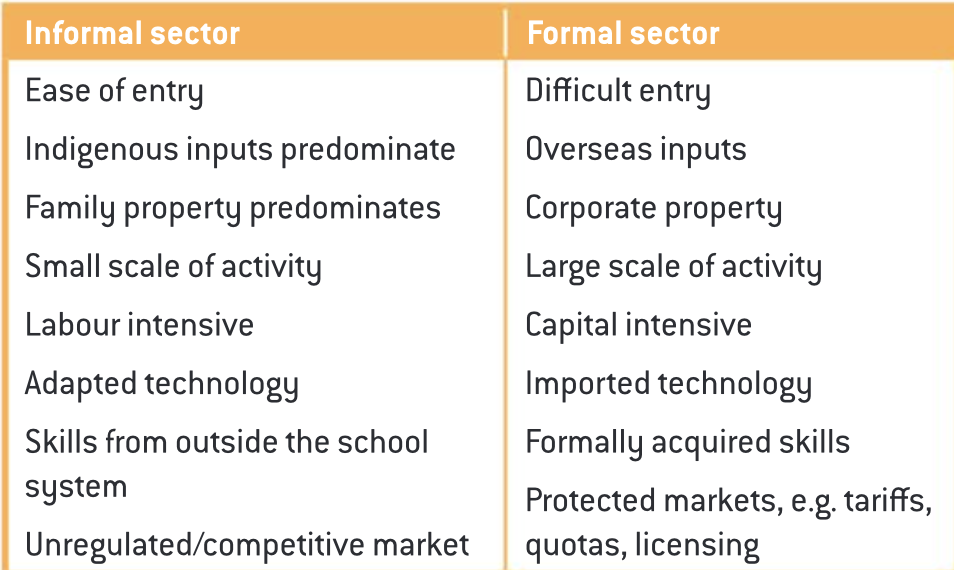The variety of urban environments
1/33
There's no tags or description
Looks like no tags are added yet.
Name | Mastery | Learn | Test | Matching | Spaced |
|---|
No study sessions yet.
34 Terms
site
the actual ground on which a settlement is located; it is also known as the absolute location of a place, usually indicated by the Longitude and Latitude
land use / function
The function of a settlement refers to the main activities taking place there
land use types (4)
residential function – Housing
industrial function – Industries
recreational function – sporting facilities eg stadium
transportation function – road and rail network
hiearchy
the arrangement of a settlement in terms of its importance or significance. It depends on factors such as range, thredhold, sphere of influence, high-order good/services, low-order good/services
range
this is the maximum distance people are prepared to travel to buy a good or pay for a service.
threshold
is the minimum number of people required to sustain a business providing a particular service or good.
sphere of influence
The area over which a person, organization, or state has a level of impact, control, or authority — politically, economically, culturally, or socially.
high-order goods/services
goods that people are prepared to travel long distances to buy. eg. washing machine, computer
low-order goods/services
goods that are bought frequently and easily available because they are sold almost everywhere. eg. bread, water, etc
Hiearchy levels (6)
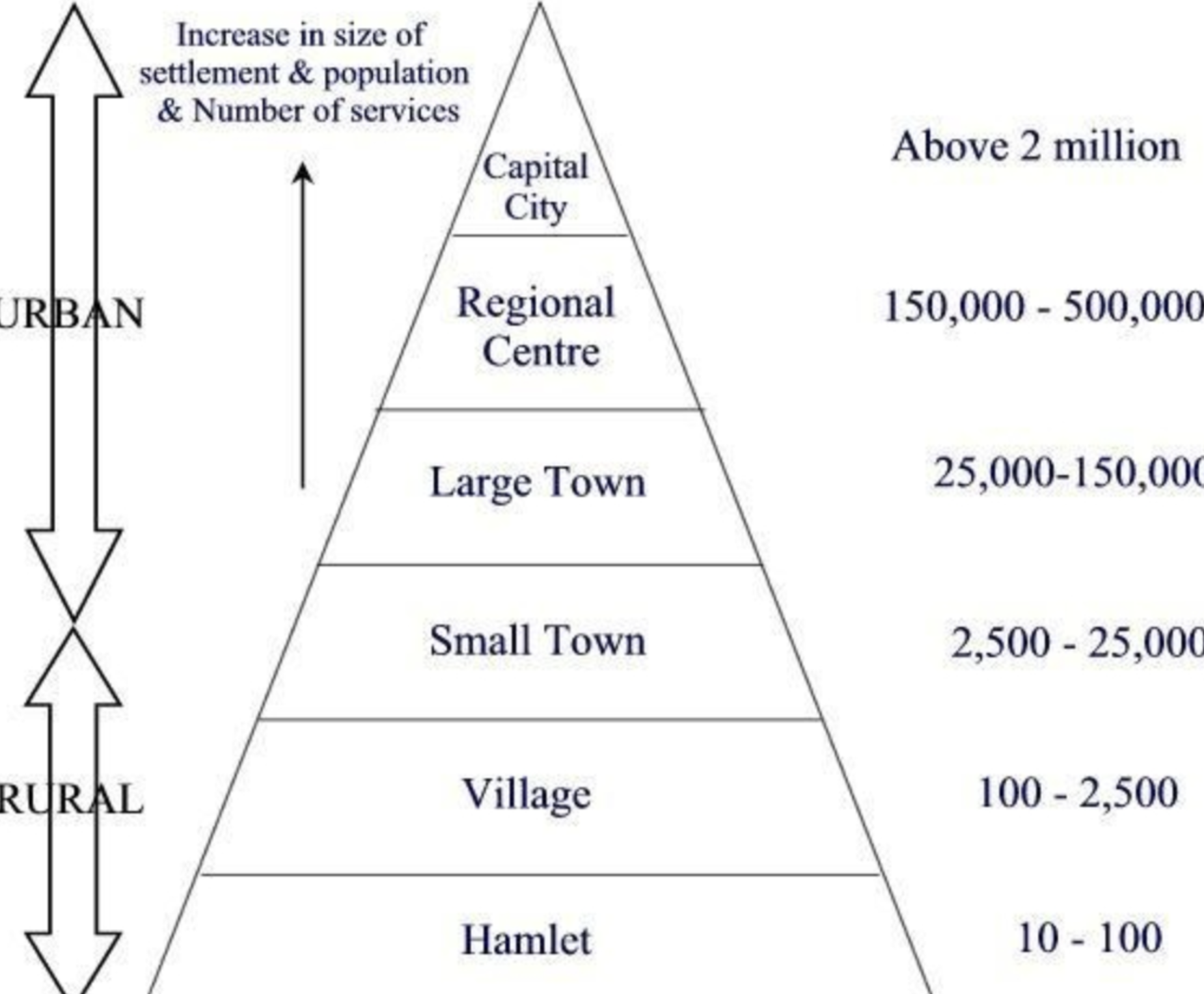
megacities
cities that have a population of over 10 million. Rapid urbanization has resulted in the rapid development of megacities.
What makes an urban city develop
Commercially, towns provide the market and exchange centres
Industrially, towns may provide a stimulus for development- the necessary for the conversion from subsistence to cash crops. larger the town the better it is for skilled and unskilled labour.
Politically, towns may provide a focus for nationalist feeling and
Administratively, towns provide economies of scale for health and also allow for ethnic, tribal and religious intermixing education.
Socially, the intermixing may help weaken ties to traditional rural beliefs and customs.
Environmental effects of urbanization (5)

Factors affecting the pattern of urban economic activities (3)
land values, physical factors, proximity to the centrail business district
growth process of urban cities
various ways these settlements may change in the hierarchy from one stage to the next. Settlements, just like living things, cities also ‘evolve’ over time – they grow over time and sometimes may also decline (die) over time, depending on how they are managed.
land values
Land values, as a factor affecting the pattern of urban economic activities, explained using the bid rent theory
bid rent theory
Bid rent theory shows how the price and demand for land changes as the distance from the Central Business District (CBD) increases. Its basic assumptions are that the highest bidder gets the land and is expected to obtain maximum profit from the land. This is based on the idea that because businesses wish to maximize their profitability, they are willing to pay more money for land close to the CBD and less for land further away.
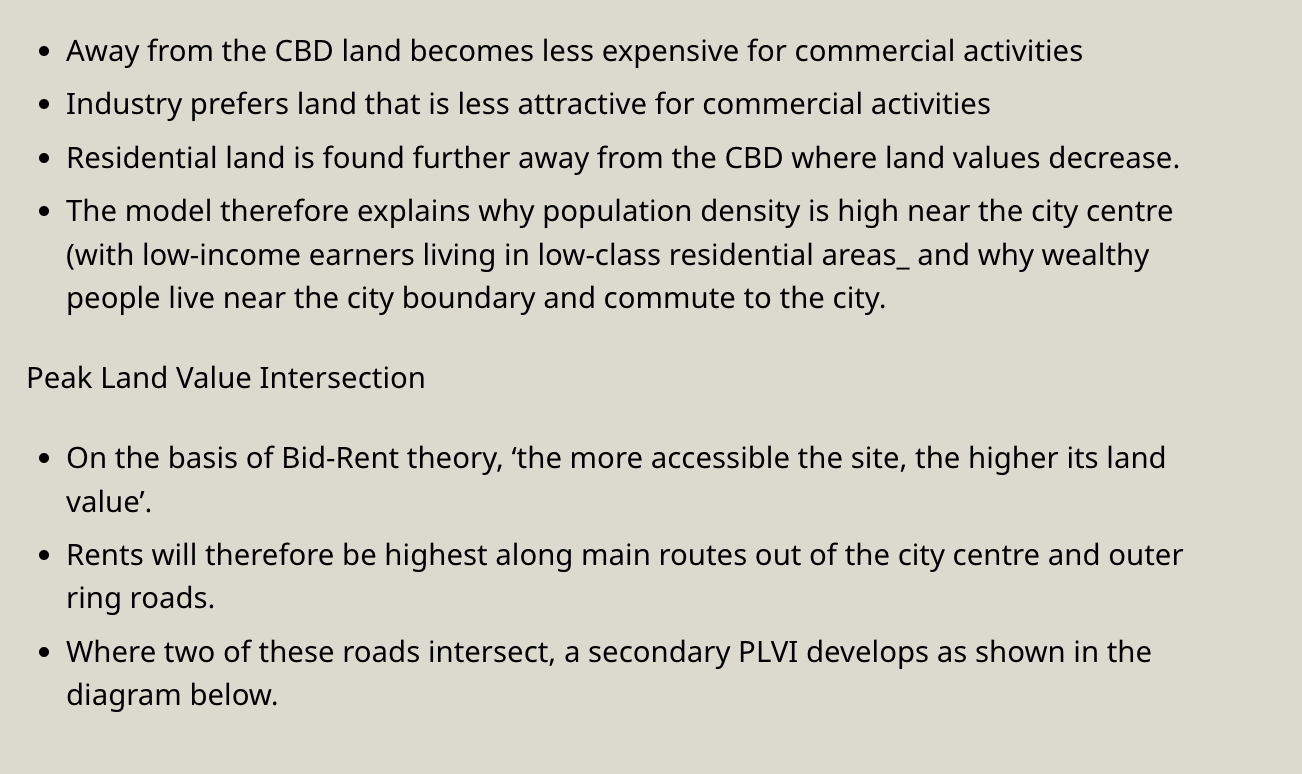
The Central Business District (CBD)
the centre of all economic activities in an urban area. Most cities in the world have their CBDs located either in the centre of the city or close to a major seaport.
Characateristics of CBD (9)
multi-story development, concentration of retailing, public transport, vertical transport, high daytime pop, function segrgation, changes over time, traffic restrictions, economic activiities
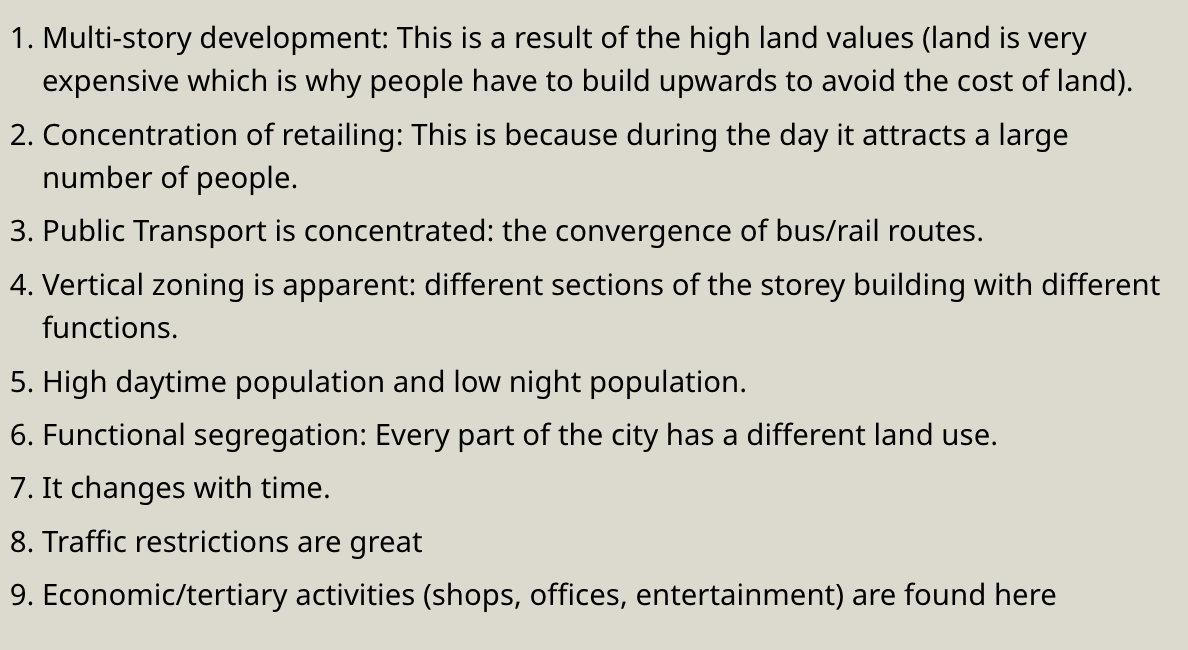
Factors causing CBD decline (6)
Poor and ageing nature of infrastructure
An increase in private car ownership makes it easier for people to live outside the CBD
Investors are attracted to out-of-town locations because many business owners desire to escape traffic congestion and pollution, so they would prefer to locate outside the CBD.
Cost of development and maintaining the CBD. It is expensive to maintain the infrastructure or improve the conditions in the CBD due to high daytime traffic, harbouring movements or the high cost involved in replacing or renewing the existing infrastructure.
Congestion, both vehicular and human and their associated problems can cause a CBD to decline by reducing the convenience of common movement. Cars can get caught in traffic due to things like the weather. This lowers productivity.
Poor planning by city authorities. Sanitation for example can lead to CBD decline when poorly planned by creating massive pollution.
Industries are attracted to large cities because (4)
Cities have large markets which attract large numbers of customers
Cities have highly skilled labour that are innovative and creative and can provide information for research and development of the products produced.
There are science and research parks located all over the CBD
Economies of scale- industries are already located there so they enjoy economies of scale.
Factors affecting the pattern of residential areas within urban areas (4)
physical factors, land values, ethnicity, urban residential planning
Physical factors
rich ppl like rivers/canals because views and recreational opportunities
poor people live further away to avoid flooding —> this works both ways tho, rich ppl live high ground
Ethnicity
Some ethnic groups may choose to live close together, and so end up forming neighbourhoods. There are positive forms of segrgation whereby the ethnic group gains advantages by being located in one. negative segregation is where certain groups are excluded from particular areas
urban residential planning
Planning is increasingly important in many cities, where authorities try to achieve a balanced social mix by having a mixture of housing types dispersed around the city.
deprivation
the extent to which individuals or communities lack fundamental necessities and resources, leading to a lower quality of life
factors affecting deprivation
physical, economic, social, environmental, political, housing
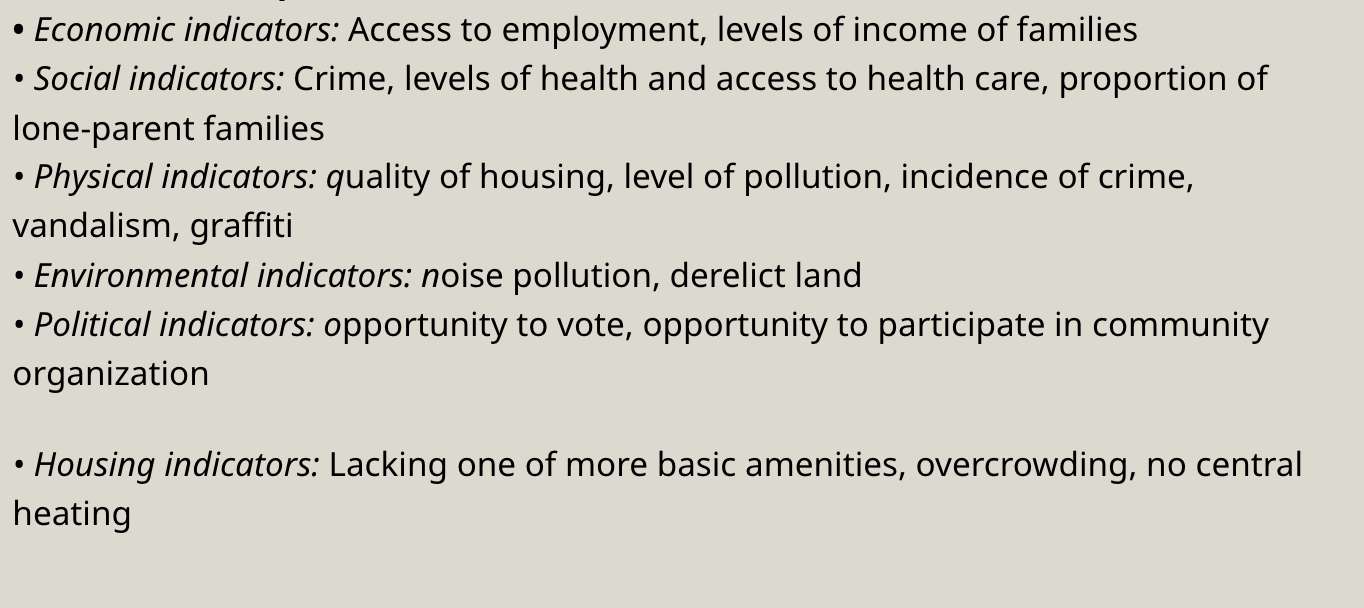
cycle of deprivation
a self-perpetuating pattern where poverty and disadvantage are passed down through generations, making it difficult for individuals to escape these conditions
slum
“contiguous settlement where the inhabitants are characterized as having inadequate housing and basic services”
squatter
person who settles on new especially public land without title or a person who takes unauthorized possession of unoccupied premises. Therefore, a residential area occupied by squatters becomes a squatter settlement
Characteristics of a slum
lack of basic services
sub-standard housing or illegal/inadequate building structures
overcrowding and high density
unhealthy living conditions
poverty and social exclusion
minimum settlement size (at least 700 square meters)
dis and advs of slums (3)
Usefulness of slum dwellings
they serve as the first stop point for immigrants who do not have money to rent decent accommodation
They serve as places of residence for low-income earners
They are the base upon which informal entrepreneurs can operate.
Disadvantages of slum dwellings
High levels of pollution
Insecurity of land tenure
Poor quality housing
unreliability of basic services e.g. water, electricity etc
Informal sector
economic activities that are not formally registered or regulated by the government
Characterisitcs of informal and formal sector
